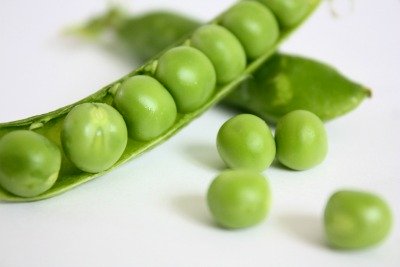Gregor Mendel’s study on monohybrid inheritance using garden pea (Pisum sativum L.) consisted of seven experiments.
Each experiment dealt with a particular character and used two parental types (the pollen source and the seed bearer) which differed in the character under consideration.
These parents had constant characters (purelines) and were crossed artificially.
The resulting hybrids (F1) were then grown and evaluated continuously from generation to generation.
By the time that Mendel read his findings to the Brünn Natural History Society in 1865, he had produced six selfed progenies of the hybrids in Experiments 1 and 2, five in Experiments 3 and 7, and four in Experiments 4, 5, and 6 (Mendel 1865).
The Results of Mendel’s Study
The results of Mendel’s study were presented in numerical order from Experiment 1 to 7 in “Versuche über Pflanzen-Hybriden” (Experiments in Plant Hybridisation).
These experiments and the parental crosses are described below.
Table GM-1. Gregor Mendel’s 7 parental crosses with garden pea.
| EXPERIMENT NO. | CHARACTER EVALUATED | PARENTAL CROSS* |
| 1 | Form/shape of ripe seed | round x wrinkled seeds |
| 2 | Color of cotyledons | yellow x green cotyledons |
| 3 | Color of seedcoats (and flowers) | grey-brown x white seedcoats |
| 4 | Form of ripe pods | inflated x constricted pods |
| 5 | Color of unripe pods | green x yellow pods |
| 6 | Position of flowers | axial x terminal flowers |
| 7 | Length of stem | long x short stem |
*Reciprocal crosses produced identical results.
Gregor Mendel’s Description of Parental Characters (Mendel 1865; Rook 1964)
1. Form/shape of ripe seeds.
These are either round or roundish**, the depressions, if any, occur on the surface, being always only shallow; or they are irregularly angular and deeply wrinkled.

**Also described as ‘smooth’.
2. Color of cotyledon.
The albumen*** of the ripe seeds is either pale yellow, bright yellow, and orange colored, or it possesses a more or less intense green tint. This difference of colour is easily seen in the seeds as if their coats are transparent.
***Refers to the seed cotyledon of a garden pea. Prof. W. Bateson, in editing Mendel’s Experiments in Plant Hybridization, noted that Mendel uses the terms ‘albumen’ and ‘endosperm’ somewhat loosely to describe the cotyledons.
3. Color of seedcoat.
This is either white, with which character white flowers are constantly correllated; or it is grey, grey-brown, leather-brown, with or without violet spotting, in which case the color of the standards is violet, that of the wings purple, and the stem in the axils of the leaves is of a reddish tint. The grey seedcoats become dark brown in boiling water.
4. Form of ripe pods.
These are either simply inflated, not contracted in places; or they are deeply constricted between the seeds and more or less wrinkled.
5. Color of unripe pods.
They are either light to dark green, or vividly yellow, in which coloring the stalks, leaf-veins, and calyx participate.
6. Position of flowers.
They are either axial, that is, distributed along the main stem; or they are terminal, that is, bunched at the top of the stem and arranged almost in a false umbel; in this case, the upper part of the stem is more or less widened in sections.
7. Length of stem.
The length of the stem is very various in some forms; it is, however, a constant character for each, in so far that healthy plants, grown in the same soil, are only subject to unimportant variations in this character.
In experiments with this character, in order to be able to discriminate with certainty, the long axis of 6 to 7 ft was always crossed with the short one of 3/4 ft to 1 1/2 ft.****
****The garden pea variants were also described as ‘tall and short’ and ‘tall and dwarf’.
LITERATURE CITED
MENDEL G. 1865. Experiments in Plant Hybridisation. (Translated by the Royal Horticultural Society of London). Retrieved Nov. 2, 2013, from https://ia600409.us.archive.org/15/items/experimentsinpla00mend/experimentsinpla00mend.pdf.
ROOK A. 1964. The Origins and Growth of Biology. Harmondsworth, Middlesex: Penguin Books Ltd. pp. 294-311.
